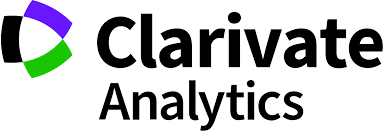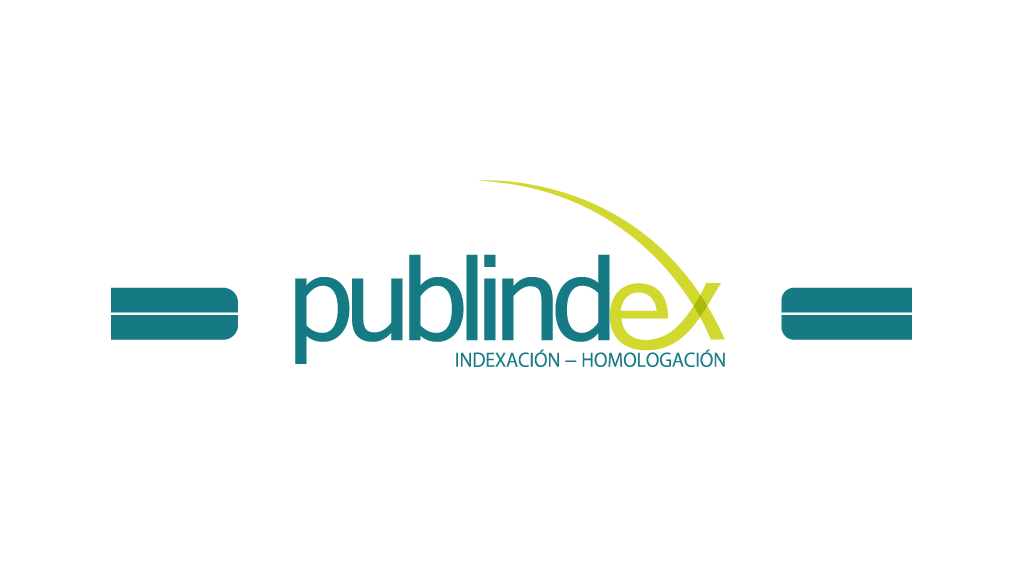
This work is licensed under a Creative Commons Attribution-NonCommercial-ShareAlike 4.0 International License.
Authors who publish in this journal agree to the following terms:
Acta Colombiana de Psicología complies with international intellectual property and copyright laws, and particularly with Article No. 58 of the Political Constitution of Colombia, Law No. 23 of 1982, and the Agreement No. 172 of September 30, 2010 (Universidad Católica de Colombia Intellectual Property Regulation).
Authors retain their copyright and grant to the Acta Colombiana de Psicología the right of first publication, with the work registered under Creative Commons attribution license, which allows third parties to use the published material, provided they credit the authorship of the work and the first publication in this Journal.
Abstract
Although marijuana use is highly prevalent among university students in Argentina, little is known about the factors that distinguish frequent marijuana users from sporadic users. For this reason, the present study investigated the possible variations in the contexts of consumption, motives for consumption, perceived norms, and protective behavioral strategies among university students with frequent or sporadic marijuana use, and analyzed the usefulness of this set of variables to distinguish between these two types of users. For this purpose, a sample of 1083 Argentine university students completed an online survey on substance use. In particular, this work was conducted with the subsample that reported using marijuana in the last 30 days (n = 158; 51.3 % female). The survey asked about marijuana use and associated negative consequences, as well as motives for use, perceived social norms, and protective behavioral strategies. As a result, frequent users had a higher number of negative consequences (M = 4.92) than sporadic users (M = 1.82; p ≤ .05), and a distinctive profile was found on a set of variables. At the multivariate level, cheerleading motives (OR = 1.230; p ≤ .05), protective behavioral strategies (OR = .941; p ≤ .05), solo use (OR = 2.024; p ≤ .05), and college party use (OR = 2.669; p ≤ .05) discriminated significantly between the two classes of users. Overall, the findings revealed heterogeneous subpopulations of marijuana users that differ not only in use and its consequences, but also in contexts of use and in a set of relevant variables. These distinct subpopulations require different and specific interventions.
Keywords

References
Arnett, J. J. (2000). Emerging adulthood. A theory of development from the late teens through the twenties. American Psychology, 55(5), 469-480. https://doi. org/10.1037/0003-066X.55.5.469
Asociación Médica Mundial (2017, abril 22). Declaración de Helsinki – Principios éticos para las investigaciones médicas en seres humanos. https://www.wma.net/ es/policies-post/declaracion-de-helsinki-de-la-amm-prin cipios-eticos-para-las-investigaciones-medicas-en-se res-humanos
Asociación Psicológica Americana (2017, febrero 12). Ethical Principles of Psychologists and Code of Conduct. https://www.apa.org/ethics/code
Beck, K. H., Caldeira, K. M., Vincent, K. B., O’Grady, K. E., Wish, E. D., & Arria, A. M. (2009). The social context of cannabis use: relationship to cannabis use disorders and depressive symptoms among college students. Addictive Behaviors, 34(9), 764-768. https://doi.org/10.1016/j. addbeh.2009.05.001
Braitman, A. L., Linden-Carmichael, A. N., & Henson, J. M. (2017). Protective behavioral strategies as a context-specific mediator: A multilevel examination of within-and between-person associations of daily drinking. Experimental and Clinical Psychopharmacology, 25(3), 141-155. https://doi.org/10.1037/pha0000111
Bravo, A. J., Pearson, M. R., Pilatti, A., Mezquita, L., & Cross-Cultural Addictions Study Team (2019). Negative marijuana-related consequences among college students in five countries: measurement invariance of the Brief Marijuana Consequences Questionnaire. Addiction, 114(10), 1854-1865. https://doi.org/10.1111/add.14646
Bravo, A. J., Prince, M. A., Pearson, M. R., & Marijuana Outcomes Study Team (2017). Can I Use Marijuana Safely An Examination of Distal Antecedents, Marijuana Protective Behavioral Strategies, and Marijuana Outcomes. Journal of Studies on Alcohol and Drugs, 78(2), 203-212. https://doi.org/10.15288/ jsad.2017.78.203
Bravo, A. J., Sotelo, M., Pilatti, A., Mezquita, L., Read, J. P., & Cross-Cultural Addictions Study Team (2019). Depressive symptoms, ruminative thinking, marijuana use motives, and marijuana outcomes: A multiple mediation model among college students in five countries. Drug and Alcohol Dependence, 204, 107558. https://doi. org/10.1016/j.drugalcdep.2019.107558
Bresin, K., & Mekawi, Y. (2019). Do marijuana use motives matter Meta-analytic associations with marijuana use frequency and problems. Addictive Behaviors, 99, Article 106102. https://doi.org/10.1016/j.addbeh.2019.106102
Buckner, J. D. (2013). College cannabis use: The unique roles of social norms, motives, and expectancies. Journal of Studies on Alcohol and Drugs, 74(5), 720-726. https:// doi.org/10.15288/jsad.2013.74.720
Buckner, J. D., Crosby, R. D., Silgado, J., Wonderlich, S. A., & Schmidt, N. B. (2012). Immediate antecedents of marijuana use: An analysis from ecological momentary assessment. Journal of Behavior Therapy and Experimental Psychiatry, 43(1), 647-655. https://doi. org/10.1016/j.jbtep.2011.09.010
Buckner, J. D., Ecker, A. H., & Cohen, A. S. (2010). Mental health problems and interest in marijuana treatment among marijuana-using college students. Addictive Behaviors, 35(9), 826-833. https://doi.org/10.1016/j. addbeh.2010.04.001
Buckner, J. D., & Terlecki, M. A. (2016). Social anxiety and alcohol-related impairment: The mediational impact of solitary drinking. Addictive Behaviors, 58, 7-11. https:// doi.org/10.1016/j.addbeh.2016.02.006
Buckner, J. D., Walukevich, K. A., & Lewis, E. M. (2019). Cannabis use motives on weekends versus weekdays: Direct and indirect relations with cannabis use and related problems. Addictive Behaviors, 88, 56-60. https:// doi.org/10.1016/j.addbeh.2018.08.012
Bruffaerts, R., Mortier, P., Kiekens, G., Auerbach, R. P., Cuijpers, P., Demyttenaere, K., Green, J. G., Nock, M. K., & Kessler, R. C. (2018). Mental health problems in college freshmen: Prevalence and academic functioning. Journal of Affective Disorders, 225, 97-103. https://doi. org/10.1016/j.jad.2017.07.044
Cialdini, R. B., Kallgren, C. A., & Reno, R. R. (1991). A focus theory of normative conduct: A theoretical refinement and reevaluation of the role of norms in human behavior. Advances in Experimental Social Psychology, 24, 201- 234. https://doi.org/10.1016/S0065-2601(08)60330-5
Cohen, J. (1992). A power primer. Psychological Bulletin, 112(1), 155-159. https://doi.org/10.1037/0033-2909.112. 1.155
Cooper, M. L. (1994). Motivations for alcohol use among adolescents: Development and validation of a four-factor model. Psychological Assessment, 6(2), 117-128. https:// doi.org/10.1037/1040-3590.6.2.117
Creswell, K. G., Chung, T., Clark, D. B., & Martin, C. S. (2014). Solitary alcohol use in teens is associated with drinking in response to negative affect and predicts alcohol problems in young adulthood. Clinical Psychological Science, 2(5), 602-610. https://doi. org/10.1177/2167702613512795
Farmer, R. F., Seeley, J. R., Kosty, D. B., Gau, J. M., Duncan, S. C., Lynskey, M. T., & Lewinsohn, P. M. (2015). Internalizing and externalizing psychopathology as predictors of cannabis use disorder onset during adolescence and early adulthood. Psychology of Addictive Behaviors, 29(3), 541-551. https://doi.org/10.1037/adb0000059
Fernández-Calderón, F., Lozano, O. M., Vidal, C., Ortega, J. G., Vergara, E., González-Sáiz, F., Bilbao, I., Caluente, M., Cano, T., Cid, F., Dominguez, C., Izquierdo, E., & Pérez, M. I. (2011). Polysubstance use patterns in underground rave attenders: A cluster analysis. Journal of Drug Education, 41(2), 183-202. https://doi.org/10.2190/ DE.41.2.d
Fischer, B., Jeffries, V., Hall, W., Room, R., Goldner, E., & Rehm, J. (2011). Lower Risk Cannabis use Guidelines for Canada (LRCUG): a narrative review of evidence and recommendations. Canadian Journal of Public Health, 102(5), 324-327. https://doi.org/10.1007/BF03404169
Garett, R., Liu, S., & Young, S. D. (2017). A longitudinal analysis of stress among incoming college freshmen. Journal of American College Health, 65(5), 331-338. https://doi.org/10.1080/07448481.2017.1312413
Hall, W. (2009). The adverse health effects of cannabis use: what are they, and what are their implications for policy International Journal of Drug Policy, 20(6), 458-466. https://doi.org/10.1016/j.drugpo.2009.02.013
Hall, W., & Degenhardt, L. (2009). Adverse health effects of non-medical cannabis use. Lancet (London, England), 374(9698), 1383-1391. https://doi.org/10.1016/S0140-67 36(09)61037-0
Herchenroeder, L., Mezquita, L., Bravo, A. J., Pilatti, A., Prince, M. A., & Cross-Cultural Addictions Study Team. (2020). A cross-national examination of cannabis protective behavioral strategies’ role in the relationship between Big Five personality traits and cannabis outcomes. The American Journal of Drug and Alcohol Abuse, 1-11. https://doi.org/10.1080/00952990.2021.1919689
Ibrahim, A. K., Kelly, S. J., Adams, C. E., & Glazebrook, C. (2013). A systematic review of studies of depression prevalence in university students. Journal of Psychiatric Research, 47(3), 391-400. https://doi.org/10.1016/j. jpsychires.2012.11.015
Keith, D. R., Hart, C. L., McNeil, M. P., Silver, R., & Goodwin, R. D. (2015). Frequent marijuana use, binge drinking and mental health problems among undergraduates. The American Journal on Addictions, 24(6), 499- 506. https://doi.org/10.1111/ajad.12201
Keough, M. T., O’Connor, R. M., & Stewart, S. H. (2018). Solitary drinking is associated with specific alcohol problems in emerging adults. Addictive Behaviors, 76, 285- 290. https://doi.org/10.1016/j.addbeh.2017.08.024
Kuntsche, E., Knibbe, R., Gmel, G., & Engels, R. (2006). Replication and validation of the Drinking Motive Questionnaire Revised (DMQ-R, Cooper, 1994) among adolescents in Switzerland. European Addiction Research, 12(3), 161-168. https://doi.org/10.1159/000092118
Larimer, M. E., Lee, C. M., Kilmer, J. R., Fabiano, P. M., Stark, C. B., Geisner, I. M., Mallett, K. A., Lostutter, T. W., Cronce, J. M., Feeney, M., & Neighbors, C. (2007). Personalized mailed feedback for college drinking prevention: a randomized clinical trial. Journal of Consulting and Clinical Psychology, 75(2), 285-293. https://doi.org/10.1037/0022-006X.75.2.285
Lewis, M. A., Litt, D. M., Blayney, J. A., Lostutter, T. W., Granato, H., Kilmer, J. R., & Lee, C. M. (2011). They drink how much and where? Normative perceptions by drinking contexts and their association to college students’ alcohol consumption. Journal of Studies on Alcohol and Drugs, 72(5), 844-853. https://doi. org/10.15288/jsad.2011.72.844
Ley 25.326 del 30 de octubre de 2000. Ley de Protección de Datos de Carácter Personal, Habeas Data. Argentina. https://www.argentina.gob.ar/justicia/derechofacil/ leysimple/datos-personales
Lipperman-Kreda, S., Mair, C. F., Bersamin, M., Gruenewald, P. J., & Grube, J. W. (2015). Who drinks where: Youth selection of drinking contexts. Alcoholism: Clinical and Experimental Research, 39(4), 716-723. https://doi.org/10.1111/acer.12670
Lipperman-Kreda, S., Paschall, M. J., Robert F, S., & Morrison, C. N. (2018). Places and social contexts associated with simultaneous use of alcohol, tobacco and marijuana among young adults. Drug and Alcohol Review, 37(2), 188-195. https://doi.org/10.1111/dar.12537
Littlefield, A. K., Sher, K. J., & Wood, P. K. (2010). Do changes in drinking motives mediate the relation between personality change and “maturing out” of problem drinking? Journal of Abnormal Psychology, 119(1), 93- 105. https://doi.org/10.1037/a0017512
Manning, K., Garey, L., Paulus, D. J., Buckner, J. D., Hogan, J. B. D., Schmidt, N. B., & Zvolensky, M. J. (2019). Typology of cannabis use among adults: A latent class approach to risk and protective factors. Addictive Behaviors, 92, 6-13. https://doi.org/10.1016/j. addbeh.2018.12.008
Merrill, J. E., & Thomas, S. E. (2013). Interactions between adaptive coping and drinking to cope in predicting naturalistic drinking and drinking following a lab-based psychosocial stressor. Addictive Behaviors, 38(3), 1672- 1678. https://doi.org/10.1016/j.addbeh.2012.10.003
Mezquita, L., Ruiz-Valero, L., Martínez-Gómez, N., Ibáñez, M. I., & Ortet, G. (2019). Desarrollo y validación de la versión breve del cuestionario de motivos de consumo de marihuana. Adicciones, 31(2), 106-116. https://doi. org/10.20882/adicciones.979
Miech, R. A., Johnston, L. D., O’Malley, P. M., Bachman, J. G., Schulenberg, J. E., & Patrick, M. E. (2018). Monitoring the Future National Survey Results on Drug Use, 1975–2017: Volume I, Secondary School Students. Institute for Social Research, The University of Michigan. http://monitoringthefuture.org/pubs.html#monographs
Miech, R. A., Patrick, M. E., O’Malley, P. M., & Johnston, L. D. (2017). The influence of college attendance on risk for marijuana initiation in the United States: 1977 to 2015. American Journal of Public Health, 107(6), 996-1002. https://doi.org/10.2105/AJPH.2017.303745
Montero, I., & León, O. G. (2007). A guide for naming research studies in Psychology. International Journal of Clinical and Health Psychology, 7(3), 847-862. http:// www.aepc.es/ijchp/GNEIP07_es.pdf
National Institute on Drug Abuse. (2018, diciembre 14). College-Age and Young Adults. https://www.drugabuse. gov/related-topics/college-age-young-adults
Napper, L. E., Kenney, S. R., Hummer, J. F., Fiorot, S., & LaBrie, J. W. (2016). Longitudinal relationships among perceived injunctive and descriptive norms and marijuana use. Journal of Studies on Alcohol and Drugs, 77(3), 457-463. https://doi.org/10.15288/jsad.2016.77.457
Organización Panamericana de la Salud [OPS]. (2018). Efectos sociales y para la salud del consumo de cannabis sin fines médicos. Organización Panamericana de la Salud. https://iris.paho.org/handle/10665.2/34944
Organización para la Cooperación y el Desarrollo Económicos [OCDE]. (2014). Education at a Glance 2014: Highlights. OECD Publishing. https://doi. org/10.1787/eag_highlights-2014-en
Osberg, T. M., Atkins, L., Buchholz, L., Shirshova, V., Swiantek, A., Whitley, J., Hartman, S., & Oquendo, N. (2010). Development and validation of the College Life Alcohol Salience Scale: A measure of beliefs about the role of alcohol in college life. Psychology of Addictive Behaviors, 24(1), 1-12. https://doi.org/10.1037/ a0018197
Patrick, M. E., Schulenberg, J. E., & O’Malley, P. M. (2016). High school substance use as a predictor of college attendance, completion, and dropout: A national multicohort longitudinal study. Youth & Society, 48(3), 425-447. https://doi.org/10.1177/0044118X13508961
Paves, A. P., Pedersen, E. R., Hummer, J. F., & LaBrie, J. W. (2012). Prevalence, social contexts, and risks for prepartying among ethnically diverse college students. Addictive Behaviors, 37(7), 803-810. https://doi.org/10.1016/j. addbeh.2012.03.003
Pearson, M. R. (2013). Use of alcohol protective behavioral strategies among college students: A critical review. Clinical Psychology Review, 33(8), 1025-1040. https:// doi.org/10.1016/j.cpr.2013.08.006
Pearson, M. R., Bravo, A. J., Conner, B. T., & Marijuana Outcomes Study Team (2017). Distinguishing subpopulations of marijuana users with latent profile analysis. Drug and Alcohol Dependence, 172, 1-8. https://doi. org/10.1016/j.drugalcdep.2016.10.043
Pearson, M. R., Bravo, A. J., Sotelo, M., & Cross-Cultural Addictions Study Team. (2019). Cross-cultural examination of college marijuana culture in five countries: Measurement invariance of the Perceived Importance of Marijuana to the College Experience Scale. Addictive Behaviors, 96, 11-17. https://doi.org/10.1016/j.addbeh. 2019.04.004
Pearson, M. R., Kholodkov, T., Gray, M. J., & Marijuana Outcomes Study Team. (2017). Perceived Importance of Marijuana to the College Experience Scale (PIMCES): initial development and validation. Journal of Studies on Alcohol and Drugs, 78(2), 319-324. https://doi. org/10.15288/jsad.2017.78.319
Pearson, M. R., Liese, B. S., Dvorak, R. D., & Marijuana Outcomes Study Team (2017). College student marijuana involvement: Perceptions, use, and consequences across 11 college campuses. Addictive Behaviors, 66, 83- 89. https://doi.org/10.1016/j.addbeh.2016.10.019
Pedersen, E. R., Huang, W., Dvorak, R. D., Prince, M. A., & Hummer, J. F. (2017). The Protective Behavioral Strategies for Marijuana Scale: Further examination Factores asociados al uso frecuente de marihuana 102 using item response theory. Psychology of Addictive Behaviors, 31(5), 548-559. https://doi.org/10.1037/ adb0000271
Pedersen, E. R., Hummer, J. F., Rinker, D. V., Traylor, Z. K., & Neighbors, C. (2016). Measuring protective behavioral strategies for marijuana use among young adults. Journal of Studies on Alcohol and Drugs, 77(3), 441- 450. https://doi.org/10.15288/jsad.2016.77.441
Phillips, K. T., Phillips, M. M., Lalonde, T. L., & Prince, M. A. (2018). Does social context matter An ecological momentary assessment study of marijuana use among college students. Addictive Behaviors, 83, 154-159. https://doi.org/10.1016/j.addbeh.2018.01.004
Pilatti, A., Bravo, A. J., & Pautassi, R. M. (2020). Contexts of alcohol use: A latent class analysis among Argentinean college students. Drug and Alcohol Dependence, 209, Article 107936. https://doi.org/10.1016/j.drugalcdep .2020.107936
Pilatti, A., Michelini, Y., Rivarola Montejano, G., Berberian, M., Carrizo, M., & Pautassi, R. M. (2019). Consumo de alcohol y marihuana en universitarios y no universitarios: relación con factores de vulnerabilidad. Quaderns de Psicologia, 21(2), e1528. https://doi.org/10.5565/rev/ qpsicologia.1528
Prince, M. A., Collins, R. L., Wilson, S. D., & Vincent, P. C. (2020). A preliminary test of a brief intervention to lessen young adults’ cannabis use: Episode-level smartphone data highlights the role of protective behavioral strategies and exercise. Experimental and Clinical Psychopharmacology, 28(2), 150-156. https://doi. org/10.1037/pha0000301
Richter, L., Pugh, B. S., & Ball, S. A. (2017). Assessing the risk of marijuana use disorder among adolescents and adults who use marijuana. The American Journal of Drug and Alcohol Abuse, 43(3), 247-260. https://doi.org /10.3109/00952990.2016.1164711
Riggs, N. R., Conner, B. T., Parnes, J. E., Prince, M. A., Shillington, A. M., & George, M. W. (2018). Marijuana eCHECKUPTO GO: Effects of a personalized feedback plus protective behavioral strategies intervention for heavy marijuana-using college students. Drug and Alcohol Dependence, 190, 13-19. https://doi.org/10.1016/j. drugalcdep.2018.05.020
Schleimer, J. P., Rivera-Aguirre, A. E., Castillo-Carniglia, A., Laqueur, H. S., Rudolph, K. E., Suárez, H., Ramírez, J., Cadenas, N., Somoza, M., Brasesco, M. V., Martins, S. S., & Cerdá, M. (2019). Investigating how perceived risk and availability of marijuana relate to marijuana use among adolescents in Argentina, Chile, and Uruguay over time. Drug and Alcohol Dependence, 201, 115-126. https://doi.org/10.1016/j.drugalcdep.2019.03.029
Schulenberg, J. E., Johnston, L. D., O’Malley, P. M., Bachman, J. G., Miech, R. A., & Patrick, M. E. (2018). Monitoring the Future national survey results on drug use, 1975-2017: Volume 2, College students and adults ages 19-55. Institute for Social Research, The University of Michigan. http://monitoringthefuture.org/pubs.html# monographs
Secretaría de Políticas Integrales sobre Drogas de la Nación Argentina [SEDRONAR]. (2017). Marihuana: intensidad del consumo. Estudio Nacional en población de 12 a 65 años sobre consumo de sustancias psicoactivas. https://www.argentina.gob.ar/sedronar/investiga cion-y-estadisticas/observatorio-argentino-de-drogas/ estudios/area-de-interes/consumo-de-drogas-en-la -poblacion-general
Simons, J. S., Correia, C. J., Carey, K. B., & Borsari, B. E. (1998). Validating a five-factor marijuana motives measure: Relations with use, problems, and alcohol motives. Journal of Counseling Psychology, 45(3), 265-273. https://doi.org/10.1037/0022-0167.45.3.265
Simons, J. S., Dvorak, R. D., Merrill, J. E., & Read, J. P. (2012). Dimensions and severity of marijuana consequences: Development and validation of the Marijuana Consequences Questionnaire (MACQ). Addictive Behaviors, 37(5), 613-621. https://doi.org/10.1016/j. addbeh.2012.01.008
Sinha, R. (2001). How does stress increase risk of drug abuse and relapse? Psychopharmacology, 158(4), 343-359. https://doi.org/10.1007/s002130100917 Skrzynski, C. J., & Creswell, K. G. (2020). A systematic review and meta-analysis on the association between solitary drinking and alcohol problems in adults. Addiction, 116(9), 2289-2303. https://doi.org/10.1111/add.15355
Spinella, T. C., Stewart, S. H., & Barrett, S. P. (2019). Context matters: Characteristics of solitary versus social cannabis use. Drug and Alcohol Review, 38(3), 316-320. https://doi.org/10.1111/dar.12912
Stevens, A. K., Aston, E. R., Gunn, R. L., Sokolovsky, A. W., Treloar Padovano, H., White, H. R., & Jackson, K. M. (2020). Does the Combination Matter Examining the Influence ofAlcohol andCannabis ProductCombinations on Simultaneous Use and Consequences in Daily Life. Alcoholism: Clinical and Experimental Research, 45(1), 181-193. https://doi.org/10.1111/acer.14494
Suerken, C. K., Reboussin, B. A., Egan, K. L., Sutfin, E. L., Wagoner, K. G., Spangler, J., & Wolfson, M. (2016). Marijuana use trajectories and academic outcomes among college students. Drug and Alcohol Dependence, 162, 137-145. https://doi.org/10.1016/j. drugalcdep.2016.02.041
Volkow, N. D., Baler, R. D., Compton, W. M., & Weiss, S. R. (2014). Adverse health effects of marijuana use. New England Journal of Medicine, 370(23), 2219-2227. https://doi.org/10.1056/nejmra1402309
































